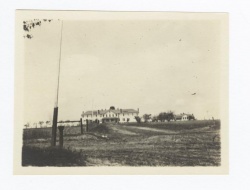Difference between revisions of "Cantonment Indian Boarding School"
Jessogrady (talk | contribs) |
Jessogrady (talk | contribs) |
||
| Line 7: | Line 7: | ||
| construction_began = | | construction_began = | ||
| opened = 1888 | | opened = 1888 | ||
| − | | closed = | + | | closed = 1927 |
| − | | demolished = | + | | demolished = No |
| current_status = | | current_status = | ||
| building_style = [[Single Building Institutions|Single Building]] | | building_style = [[Single Building Institutions|Single Building]] | ||
| architect(s) = | | architect(s) = | ||
| − | | location = | + | | location = West shore of Canton Lake |
| − | | architecture_style = | + | | architecture_style = Dormitory Style |
| peak_patient_population = | | peak_patient_population = | ||
| alternate_names =<br> New Cantonment Indian Boarding School | | alternate_names =<br> New Cantonment Indian Boarding School | ||
| Line 27: | Line 27: | ||
Consumption (or Tuberculosis) seems to also have been a problem at this particular boarding school, with confirmed reports of multiple children dying from the disease on several occasions. | Consumption (or Tuberculosis) seems to also have been a problem at this particular boarding school, with confirmed reports of multiple children dying from the disease on several occasions. | ||
| − | Also known as "New Cantonment" and "Cantonment on the North Fork of the Canadian River," the site is listed in the National Register of Historic Places (NR 70000527). | + | The town of Cantonment was flooded by the State of Oklahoma in 1938 to create a man-made lake, Lake Canton at the cost of $11 million. |
| + | Also known as "New Cantonment" and "Cantonment on the North Fork of the Canadian River," the site is listed in the National Register of Historic Places (NR 70000527), and has been restored by the Cheyanne-Arapaho Tribes was a reminder. | ||
==Images of Cantonment Indian Boarding School== | ==Images of Cantonment Indian Boarding School== | ||
Revision as of 11:48, 30 August 2019
| Cantonment Indian Boarding School | |
|---|---|
 | |
| Opened | 1888 |
| Closed | 1927 |
| Demolished | No |
| Building Style | Single Building |
| Location | West shore of Canton Lake |
| Architecture Style | Dormitory Style |
| Alternate Names | New Cantonment Indian Boarding School |
History
The boarding school began in an US army post located on the North Canadian River five miles northwest of present Canton, in Blaine County, OK. ("Cantonment" is a general term used to identify temporary military fortifications.) Once it was decided the Northern Cheyenne would be removed from Indian Territory, Cantonment was no longer needed by the army, and the military abandoned it in June 1882. The Department of the Interior gained control of Cantonment in 1882 and allowed the Mennonites to operate the station as a school for Indian children. The Interior Department maintained a school at Cantonment beginning in 1898 and in 1903 designated the facility a subagency of the Cheyenne and Arapaho Agency at Darlington.
A newer campus was built by the Mennonite Church during 1888 (when a new building was constructed after complaints by the Cheyenne) upon 3,800 acres of land in rural Oklahoma, this land belonging to the Cheyenne & Arapaho Tribes was reduced to 800 acres by the U.S. Government by 1913. Rev. D. B. Herschler was Superintendent in 1888.
Schooling was conducted 10 months out of the year, with an attendance of 61 pupils on record in March of 1888. Great emphasis was paid to teaching the Christian faith, as well as "labor with their hands". Children taught not to hunt or gather, but rather to garden, farm, and take care of stock. Girls were taught kitchen work and sewing instead of weaving. Native languages were banned from use, making English the only acceptable language.
Consumption (or Tuberculosis) seems to also have been a problem at this particular boarding school, with confirmed reports of multiple children dying from the disease on several occasions.
The town of Cantonment was flooded by the State of Oklahoma in 1938 to create a man-made lake, Lake Canton at the cost of $11 million. Also known as "New Cantonment" and "Cantonment on the North Fork of the Canadian River," the site is listed in the National Register of Historic Places (NR 70000527), and has been restored by the Cheyanne-Arapaho Tribes was a reminder.
